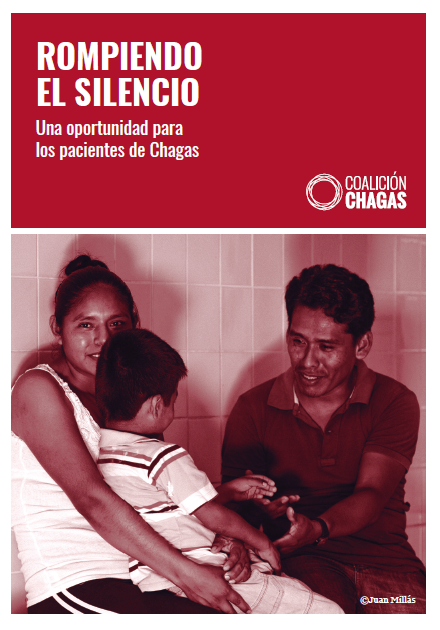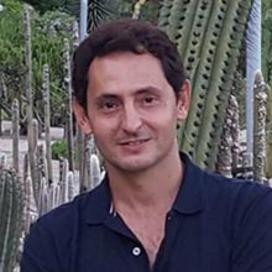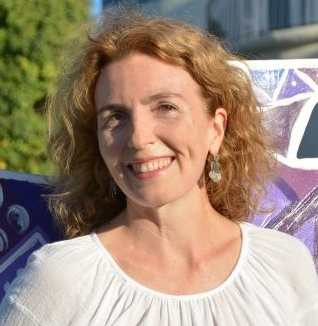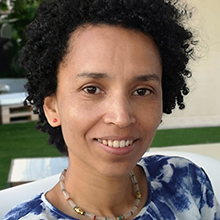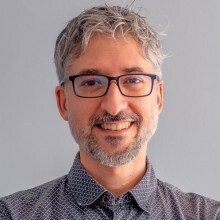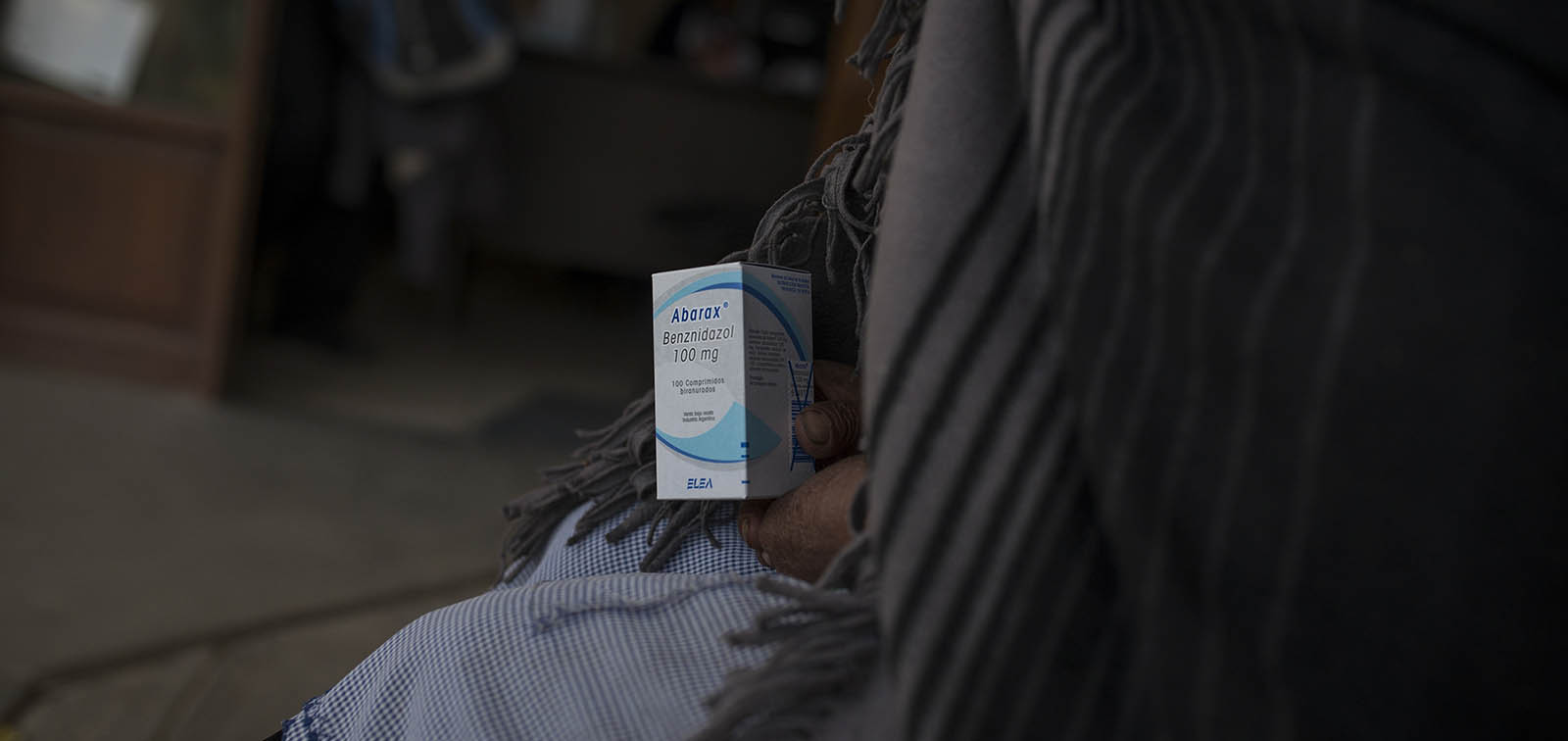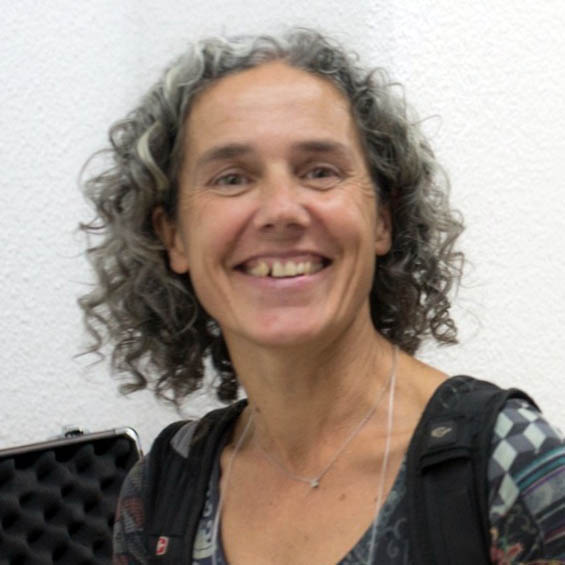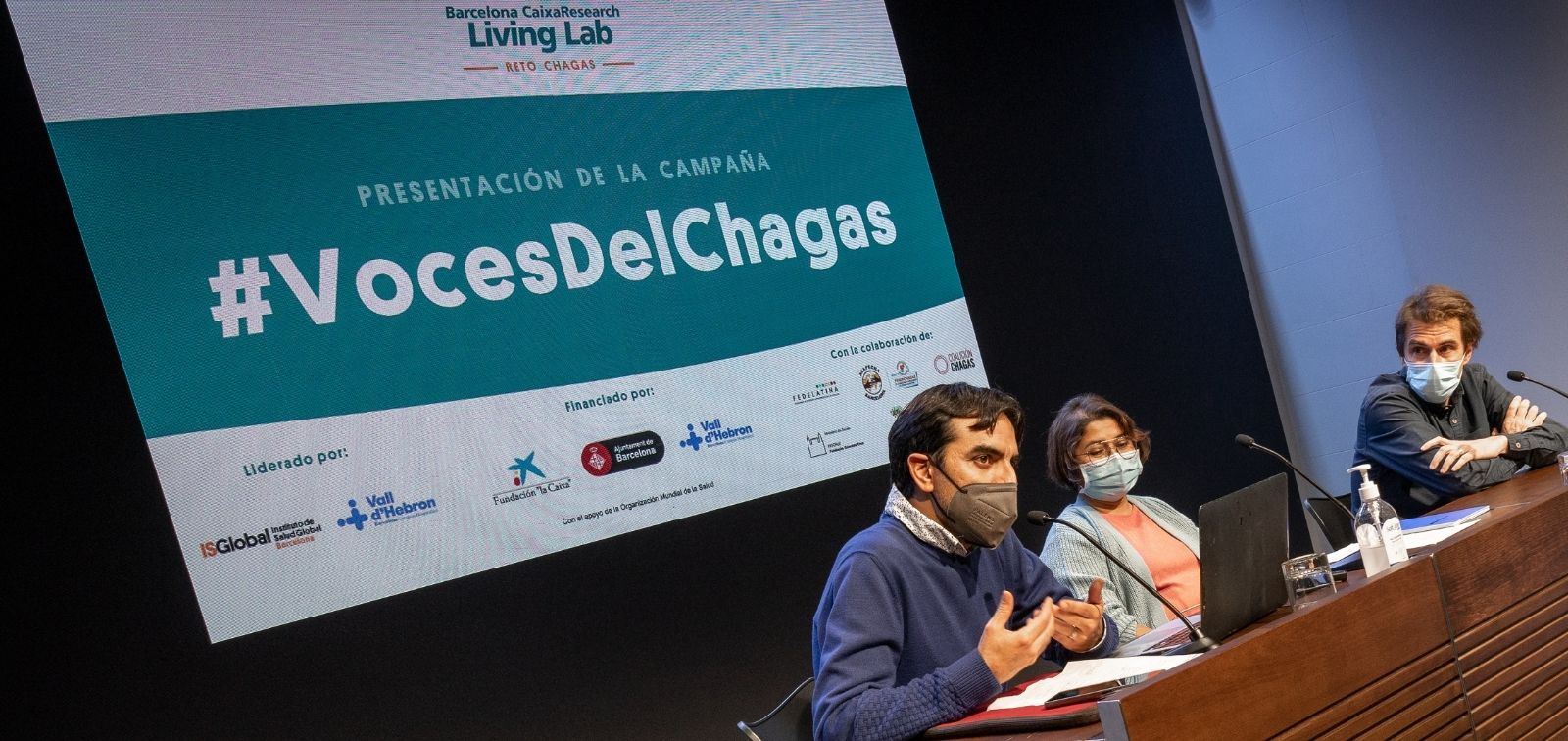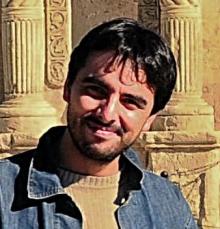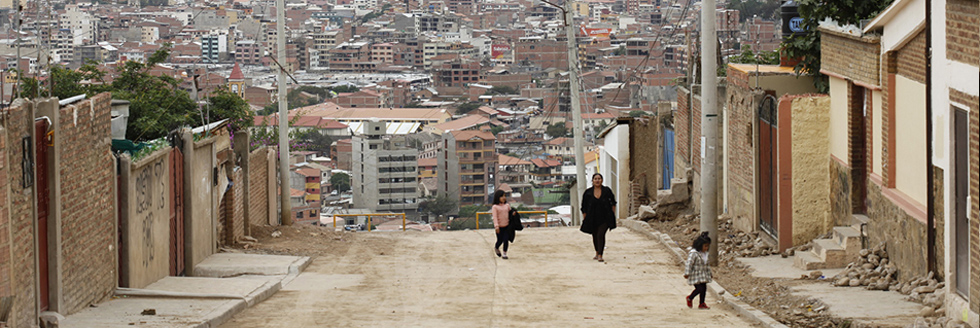
Featured Items

World Chagas Day

adelaida sarukhan - ISGlobal analysis team*
april 14, 2016
In 1909, the Brazilian epidemiologist Carlos Chagas described the disease that probably caused Charles Darwin’s death a couple of years ago and discovered that it was transmitted by a parasite (that he named Trypanosoma cruzi) in the gut of the so-called kissing bugs (triatomine insects). Since then, scientific, medical and political progress has been made in terms of vector control and Chagas disease treatment. However, despite the fact that today there are 25 million people at risk and more than 6 million infected people, Chagas has been, and remains, a silent and silenced disease. Silent because of the lack of specific symptoms at the time of infection and to the time elapsed before the onset of cardiac alterations in around 30% of chronic patients. Silenced because its transmission is linked to poverty and its magnitude, even in the 21st century, is largely unknown.
Transmission: vectorial (through the bite of triatomine bugs or their droppings that contaminate food and beverages); from mother to baby during pregnancy and labour; through blood and organ donations.
Symptoms: The disease has an initial acute phase that often goes unnoticed because of its mild and unspecific symptoms, followed by a chronic phase. Ten to thirty years later, around 40% of chronic patients develop cardiac and digestive alterations that are irreversible and potentially lethal.
The good news is that, although there is no vaccine against Chagas, it can be treated. The bad news is that, today, only 1% of Chagas patients have access to the treatment. On the occasion of the World Chagas Day on April 14th, the Global Chagas Disease Coalition has prepared the document "Breaking the Silence: an Opportunity for Patients with Chagas Disease" that advocates for increasing the access to disease diagnosis and treatment.
As a consequence of migratory flows, Chagas is no longer a problem unique to Latin America and is now present in non-endemic countries. It is estimated that there are 300,000 infected people living in USA and 150,000 in Europe.
This online report summarizes the Coalition’s main arguments and places emphasis on the obstacles and solutions for ensuring that the universal access to Chagas disease treatment becomes a reality.
1. The Inequity Problem
Below the numbers, by no means negligible (more than 6 million infected people of which 7,000 die every year), lies a problem of inequity. Due to the geographical distribution of the vector, Chagas is a disease that particularly affects poor rural and peri-urban populations that are uninformed and therefore neglected. Precisely because of its disproportionate impact on the poorest and its capacity to generate poverty through its effects on work productivity, the WHO has classified Chagas, together with 16 other diseases, as "neglected tropical diseases (NTDs)”.
The fact that there are drugs (benznidazole and nifurtimox) to treat Chagas disease implies that the treatment of affected patients should not be a matter of debate, according to the right to health established by the WHO and in line with the new Sustainable Development Goals. However, the reality is that the access to disease diagnosis and treatment for the affected, and mostly poor, populations is twice as difficult. In the first place, disease diagnosis is not integrated in the primary healthcare services of the affected areas, and the people are seldom informed of the risk of the vector’s presence in and around the houses, or of the risk of transmitting it from mother to baby. The additional problem for these people is that, even if the treatment’s availability and affordability is guaranteed, the treatment regime implies several visits to the doctor, which are not cost-free. And yet, the benefits of treating Chagas disease are also double. The elimination of the parasite or the decrease in parasite burden in infected people not only reduces the probability of developing the disease but also contributes to interrupting its cycle of transmission. Thus, the reasons for breaking the silence of Chagas are not only ethical but also practical.
2. The Economic Problem
If the ethical arguments in favour of treating the affected populations do not seem to have enough political impact, the economic arguments are indisputable. Chagas is the leading cause of cardiovascular death in Latin America and is the fourth infectious disease in terms of burden in lost life years (DALY, or disability-adjusted life years). The average cost per treated patient is 474 USD per year, while the cost in terms of productivity loss exceeds 4,600 USD per year. It has been estimated that the overall economic burden of Chagas disease for all patients worldwide is 7.2 billion USD. This stands in stark contrast with the total amount allocated to R&D in Chagas disease over the whole 2003-2013 decade: only 162 million USD.
The few studies performed to date show that the screening of pregnant women and their relatives, followed by the treatment of the positive cases, is cost-effective..
3. The Problems of Access to Diagnosis and Treatment
Today it is possible to treat the disease, but less than 1% of affected people receive the treatment. The reasons for this are many:
- Lack of properly trained medical staff: Unfortunately, many people, including healthcare workers, believe that there is no efficient treatment for Chagas disease. Medical doctors, paediatricians, obstetricians, nurses and laboratory technicians, particularly those working in primary health centres, need to be aware of the importance of detecting, diagnosing and treating the disease, and informed of the benefits of the treatment.
- Lack of access: To facilitate disease diagnosis and treatment in primary health care facilities, it is not only necessary to train the staff but also to guarantee the availability of diagnostic tools and drugs. In turn, budget estimations on behalf of the government and drug production on behalf of pharmaceutical companies can only be achieved through updated epidemiological data and coherent policies that integrate Chagas treatment into the health system.
- Lack of an effective antiparasitic treatment for chronic adult patients: Both benznidazole and nifurtimox are practically 100% effective in new-borns and highly effective during the acute phase of the infection. However, as more time passes since the infection, their efficacy diminishes and the risk of adverse effects increases. Although it was initially thought that treatment of the chronic population was not worthwhile, it has been shown that vertical transmission of T. cruzi can be interrupted when women in childbearing age are treated (treatment during pregnancy is contraindicated). Furthermore, recent scientific evidence indicates that the parasite itself maintains the inflammatory reaction that leads to heart and other organ damage, which is why antiparasitic treatment should also be offered to chronic patients under 50 years of age. However, in those chronic patients with established heart disease , benznidazole treatment does not improve the clinical outcome, highlighting the need to find new treatments for this population and the importance of treating patients before they develop heart complications.
- A broken R&D model: The lack of access and innovation in diagnosis and drugs is inextricably linked to the current model of R&D. PAHO’s Strategic Fund currently distributes the drugs in Latin America, thereby facilitating price negotiations and their distribution in countries where they are not registered. To date, there are two manufacturers of benznidazole – ELEA and LAFEPE – but only the former is ensuring international supplies. For its part, thanks to the Uniting to combat Neglected Tropical Diseases- The London declaration initiative that took place in 2012, the pharmaceutical Bayer made the commitment to donate nifurtimox until 2020. The problem is that there are few alternatives in case of drug shortage. It is also urgent to encourage R&D for new diagnostic and treatment tools against Chagas and other neglected diseases, but this is not something that attracts pharmaceutical interest due to the low market potential of poor populations in developing countries. Because of this, the products and tools for the treatment and control of neglected diseases are being primarily developed by non-profit alliances such as Drugs for Neglected Diseases Initiative, DNDi; theFoundation for Innovative New Diagnostics, FIND; the Infectious Disease Research Institute, IDRI and the Innovative Vector Control Consortium, IVCC). Some encouraging actions are boosting these efforts. For example, in London declaration mentioned above, companies such as Abbott, AstraZeneca, Novartis and Pfizer offered DNDi access to their compound libraries to develop new drugs. The Bill & Melinda Gates Foundation promised to contribute 363 million USD to fight neglected diseases, while the Mundo Sano Foundation committed itself to continue its projects on Chagas with a contribution of five million USD.
The Treatment: the Sooner, the Better
The R&D needs
For most neglected diseases, the drugs, diagnostic tools and control strategies are not perfect and can be largely improved. Chagas is not the exception and this is mainly due to the fact that the money invested in R&D for the disease over the 2003-2013 period is clearly insufficient: only 162 million USD (an average 16 million per year).
The most urgent needs in research and development for the control and treatment of Chagas disease are the following:
- Betterdiagnostic tools: To date, a minimum of two tests 9 months apart are required to confirm the diagnosis among new-borns, with the consequent risk that the patient will not return to the health facility. In addition, there is room to improve the simplicity of diagnosis and improve the specificity of rapid tests.
- New drugs or better combinations: The existing drugs are not effective enough to treat adult chronic patients, they have many adverse effects and the treatment duration (60 days) is an obstacle.
- Development of biomarkers. : New serological markers are needed to predict disease progression and measure the efficacy of available or new treatments.
Regarding vaccines, there is still no approved preventive vaccine against Chagas disease. However, different institutions are investigating therapeutic vaccines that could in the future play an important role in the treatment of chronic patients. Finally, it is important to underline the fact that it is of little use to develop new control and treatment tools if they do not reach the populations that need them. Therefore, R&D needs to go hand in hand with implementation strategies that are adapted to the local context, where multiple stakeholders (local and national governments, decision makers, health facility administrators, sociologists, communicators) play a role.
5. Vector Control: a Key Problem
One of the most efficient ways to stop vector-borne disease transmission is to control the vector. Insecticides have been traditionally used to control the kissing bug that transmits Chagas disease. However, insecticides are expensive and can drive insecticide resistance, as has occurred in Argentina and Bolivia where pyrethroid-resistant triatomines have been reported. Alternative strategies have been recently developed for the control of vectors of several neglected diseases, including the genetic modification of different mosquito species with the aim of reducing their fertility or their capacity to transmit the parasite. However, these new strategies are still far from being applied to triatomine insects. In any case, vector control programs need to be maintained over time and require sustained efforts.
A Success Story: the Bolivian Platform
With 60% of its territory considered endemic for Chagas, Bolivia is the country with the largest number of new cases per year. The national prevalence is estimated at 6.1%, although it greatly varies between areas. In 2009, ISGlobal and the CEADES Foundation, in collaboration with the National Health System of Bolivia and the universities at Tarija and Cochabamba, created the Platform for the Integral Care of Patients with Chagas Disease that aims to cover the diagnosis and treatment of adult patients, train medical staff, and conduct research and development projects. The platform consists of six facilities in three departments (Cochabamba, Chuquisaca and Tarija).
The activities of the platform take into account the gender and ethnic conditions that hamper the access of the most vulnerable groups. In addition, it carries out information activities to raise awareness and increase disease surveillance, prevention and access to health services. The health professionals have received training to increase their knowledge and capacities in the clinical handling of Chagas patients. Research projects include progression biomarkers and therapeutic response, clinical characterization of heart and digestive complications, and the evaluation of vector control strategies in neighbouring communities.
By December 2015, the platform had attended more than 24,700 people, of which 21,400 were diagnosed with infection. Of the 140,000 treated patients, more than 80% completed their treatment.
The success of the platform has provided the basis for a model that is currently being extended to all centres of the Bolivian National Health System. It is expected that this will ensure the financial sustainability of the model that is currently funded by foreign aid, in particular the Spanish Agency for International Cooperation and Development (AECID).
In order to replicate and extend the model, there are major lessons to be drawnfrom the Bolivian project:
- Collaborate and coordinate with the primary health care networks
- Launch the program in places where the main actors are willing to act
- Ensure the access to drugs before starting the diagnosis
- Offer complimentary exams in the same centre
The Solutions
After presenting the ethical and practical arguments for increasing the access to treatment against Chagas disease and describing three success stories (the Bolivian platform, the La Plata district in Argentina and the Chagas medical centre at UCLA, USA), the Global Chagas Disease Coalition calls on the governments of the affected countries and the public and private actors to act. Governments must reaffirm their political commitment to develop a global strategy to fight against Chagas disease, launch programs to accelerate the access to diagnosis and treatment, and step up efforts in transmission control. The public and private stakeholders must join national efforts by focusing on established priorities and spreading the message on the importance of increasing the access to diagnosis and treatment.
The magic recipe does not exist, but the Coalition’s recommendations are very clear and include the following actions:
- Training of healthcare workers
- Integrate the diagnosis and treatment in the primary health system, with clear protocols on screening and treatment, and inform, educate and communicate in order to raise awareness
- Screen women of childbearing age and their newborns. Treat all cases according to recommendations
- Screen blood and organ donors, and refer all positive cases to the health system
- Include epidemiological data on Chagas in the information systems in order to determine the magnitude of the problema and anticípate drug demand
- Guarantee the production of and access to good-quality drugs in each country
- Fund R&D for new diagnostic tools and drugs
- Establish clear national policies aligned with the WHO goals and the Sustainable Development Goals
- Encourage the commitment of different local, regional and national stakeholders
- Increase available funding for Chagas disease control programs
Further information
Blog Posts about Chagas
Esta es una publicación del equipo de Análisis de ISGlobal: Han participado Gonzalo Fanjul, Joaquim Gascon, Silvia Moriana, Pau Rubio, Adelaida Sarukhan y Marta Solano. Diseño gráfico: Anna Barberà. Visualizaciones: Data'n'Press. Programación: Óscar Rodríguez/Sonicon.


